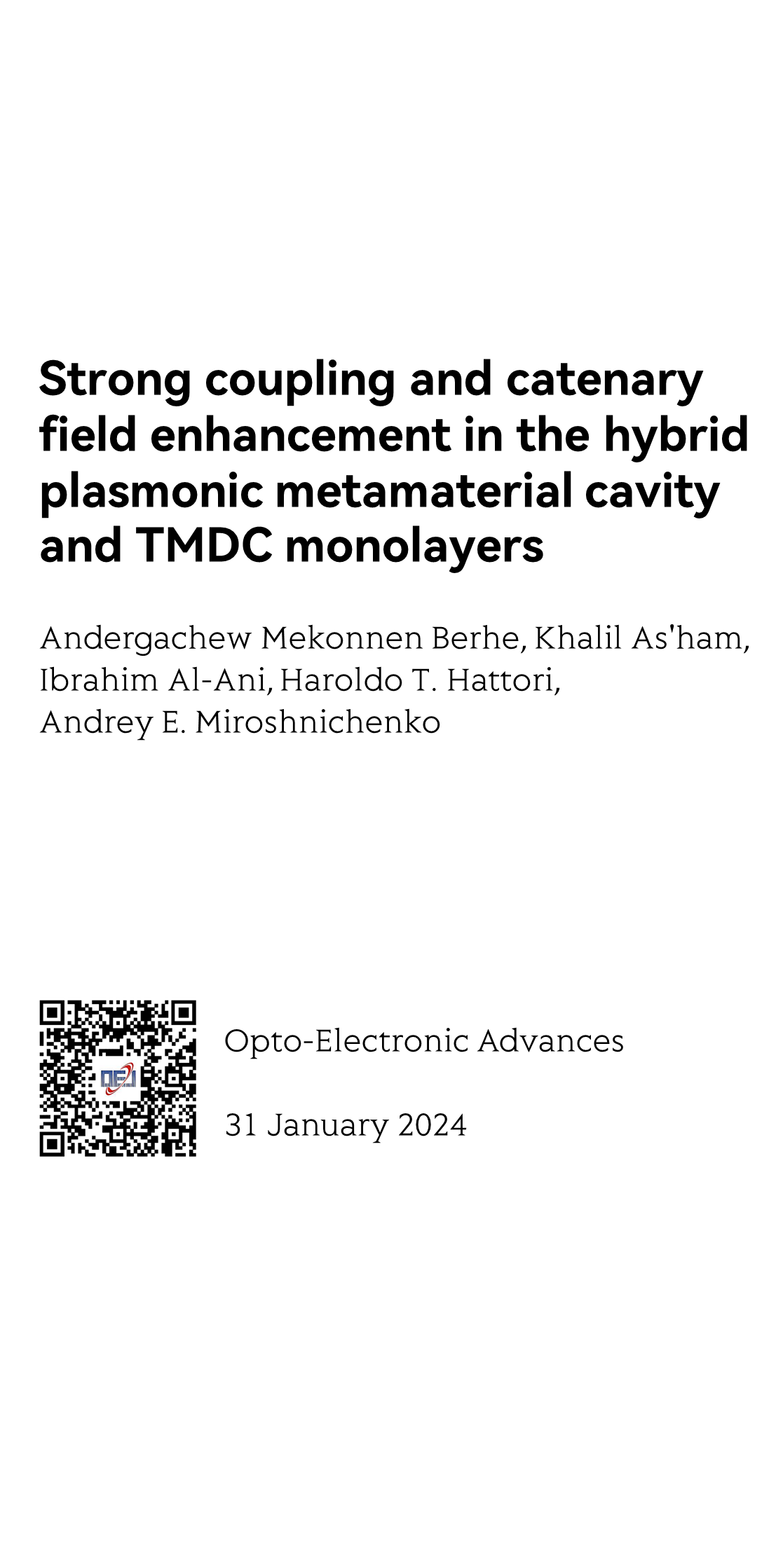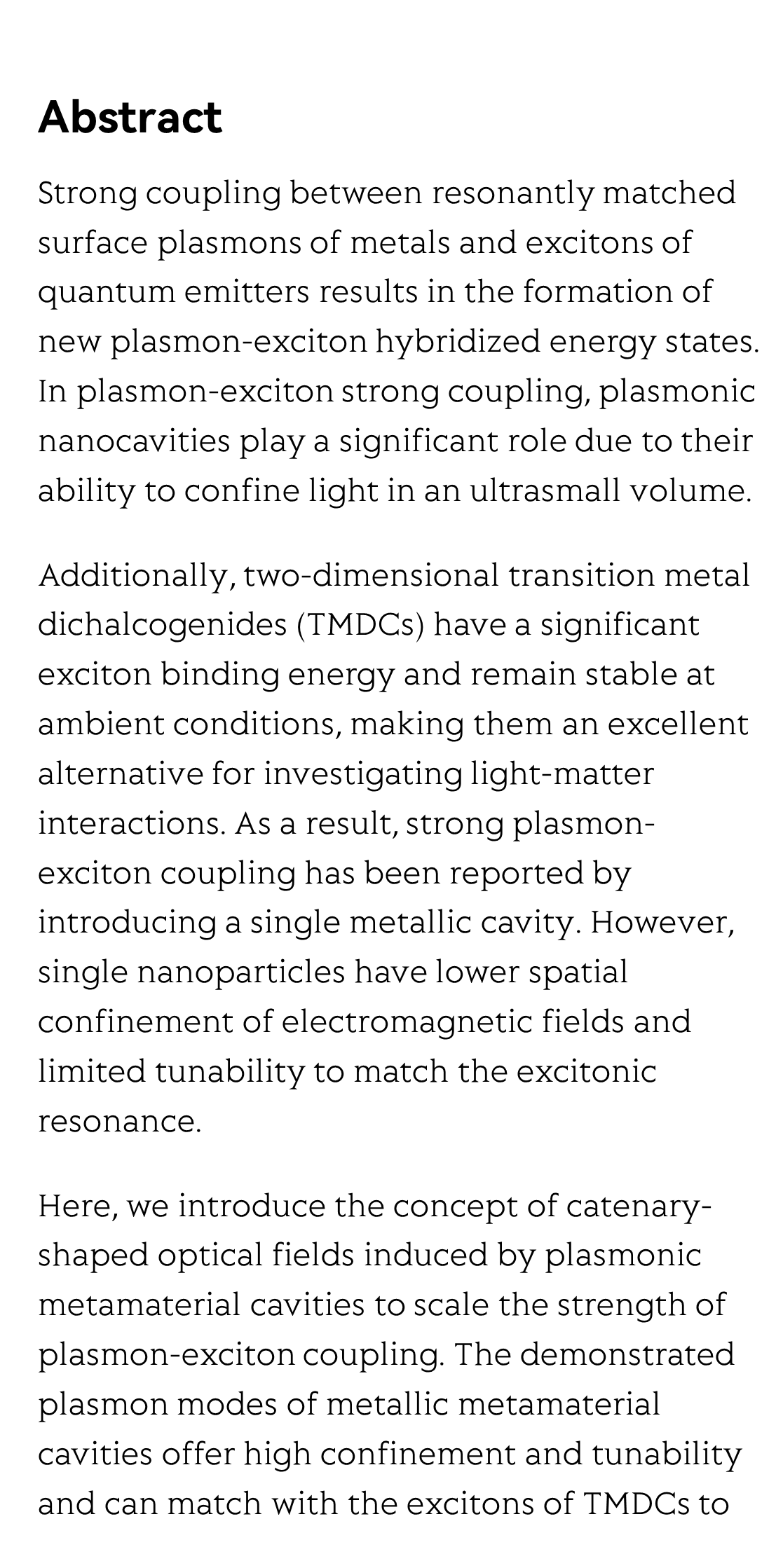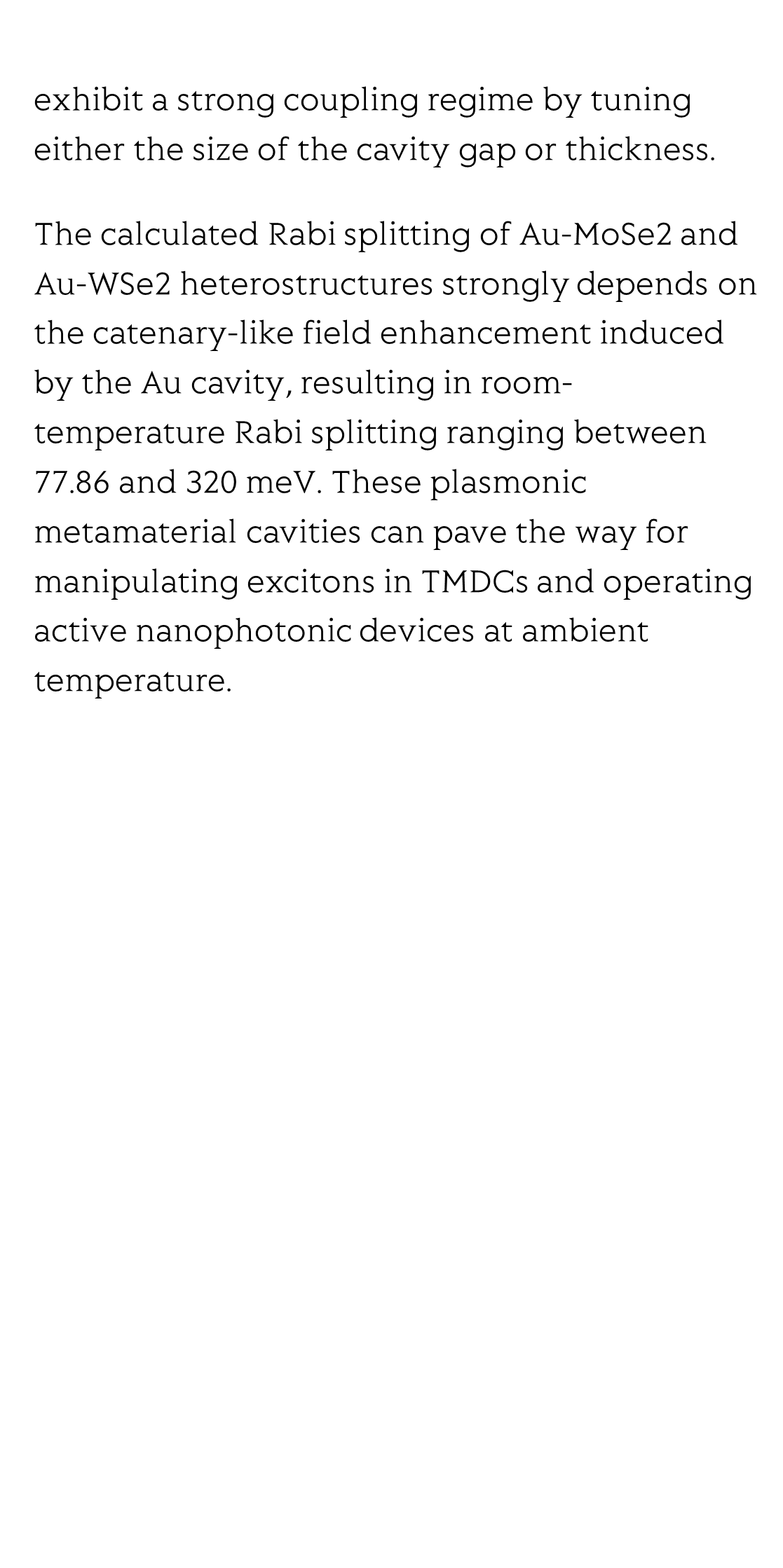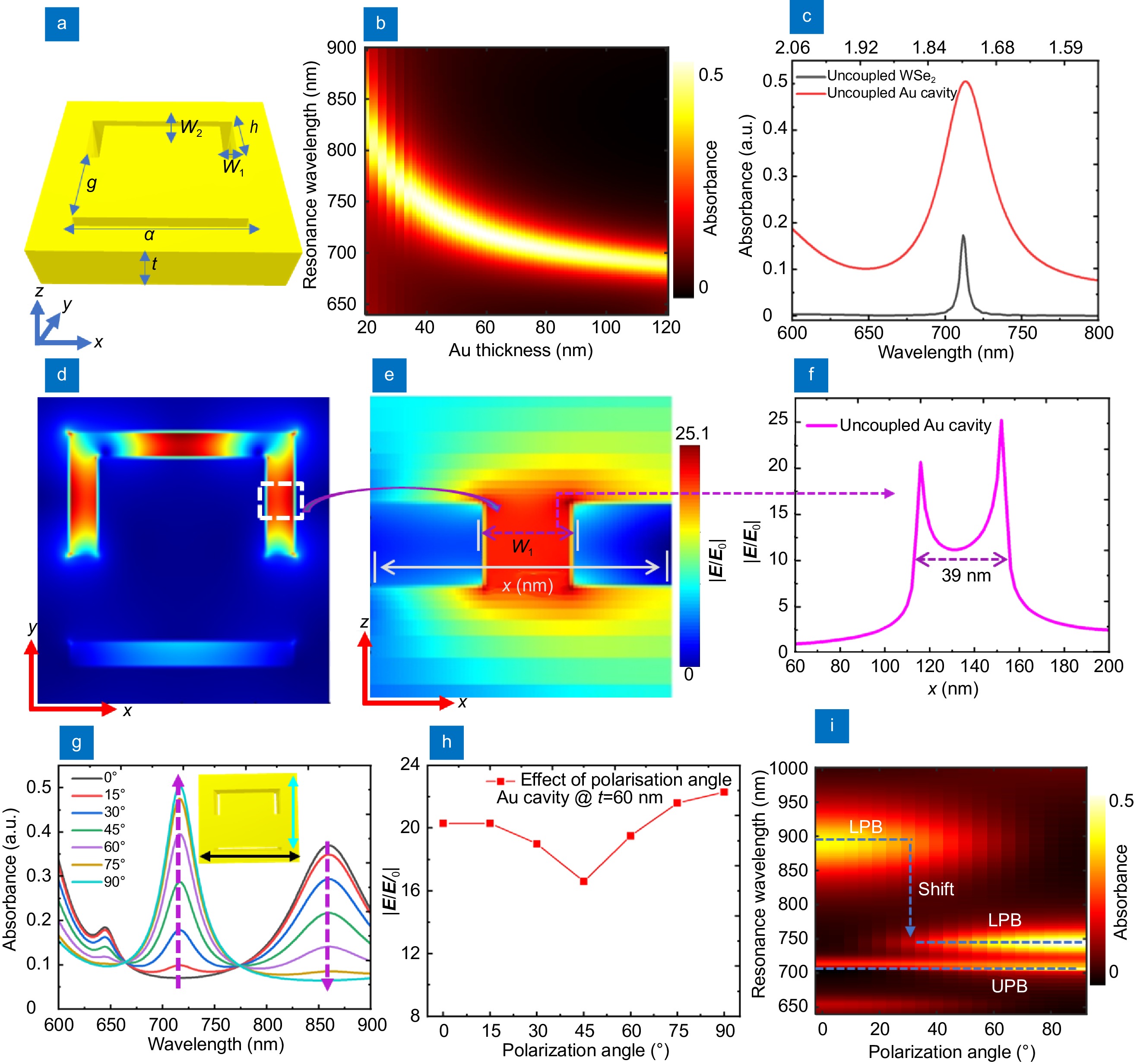(Peer-Reviewed) Strong coupling and catenary field enhancement in the hybrid plasmonic metamaterial cavity and TMDC monolayers
Andergachew Mekonnen Berhe, Khalil As'ham, Ibrahim Al-Ani, Haroldo T. Hattori, Andrey E. Miroshnichenko
School of Engineering and Technology, University of New South Wales at Canberra, Northcott Drive, Canberra ACT 2610, Australia
Opto-Electronic Advances
, 2024-01-24
Abstract
Strong coupling between resonantly matched surface plasmons of metals and excitons of quantum emitters results in the formation of new plasmon-exciton hybridized energy states. In plasmon-exciton strong coupling, plasmonic nanocavities play a significant role due to their ability to confine light in an ultrasmall volume.
Additionally, two-dimensional transition metal dichalcogenides (TMDCs) have a significant exciton binding energy and remain stable at ambient conditions, making them an excellent alternative for investigating light-matter interactions. As a result, strong plasmon-exciton coupling has been reported by introducing a single metallic cavity. However, single nanoparticles have lower spatial confinement of electromagnetic fields and limited tunability to match the excitonic resonance.
Here, we introduce the concept of catenary-shaped optical fields induced by plasmonic metamaterial cavities to scale the strength of plasmon-exciton coupling. The demonstrated plasmon modes of metallic metamaterial cavities offer high confinement and tunability and can match with the excitons of TMDCs to exhibit a strong coupling regime by tuning either the size of the cavity gap or thickness.
The calculated Rabi splitting of Au-MoSe2 and Au-WSe2 heterostructures strongly depends on the catenary-like field enhancement induced by the Au cavity, resulting in room-temperature Rabi splitting ranging between 77.86 and 320 meV. These plasmonic metamaterial cavities can pave the way for manipulating excitons in TMDCs and operating active nanophotonic devices at ambient temperature.
High-resolution tumor marker detection based on microwave photonics demodulated dual wavelength fiber laser sensor
Jie Hu, Weihao Lin, Liyang Shao, Chenlong Xue, Fang Zhao, Dongrui Xiao, Yang Ran, Yue Meng, Panpan He, Zhiguang Yu, Jinna Chen, Perry Ping Shum
Opto-Electronic Advances
2024-12-16
Ultra-high-Q photonic crystal nanobeam cavity for etchless lithium niobate on insulator (LNOI) platform
Zhi Jiang, Cizhe Fang, Xu Ran, Yu Gao, Ruiqing Wang, Jianguo Wang, Danyang Yao, Xuetao Gan, Yan Liu, Yue Hao, Genquan Han
Opto-Electronic Advances
2024-10-31







